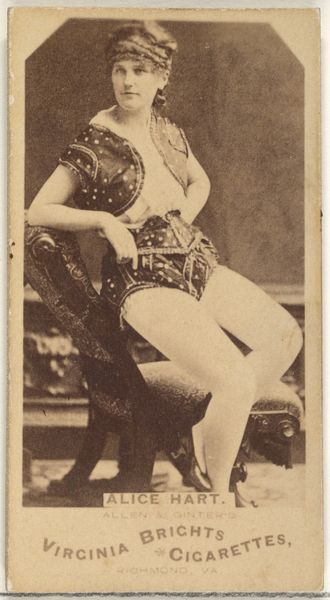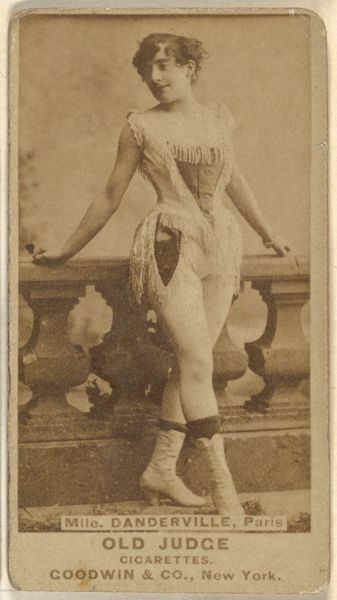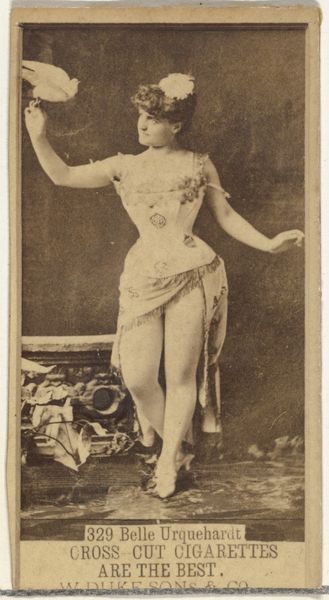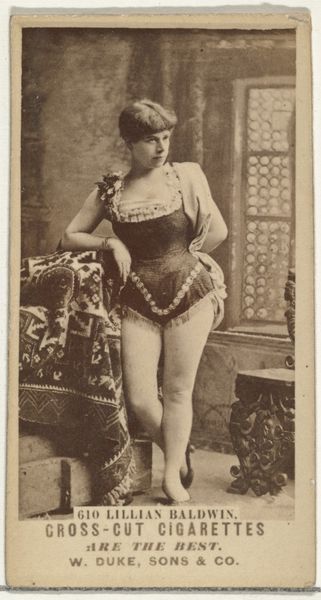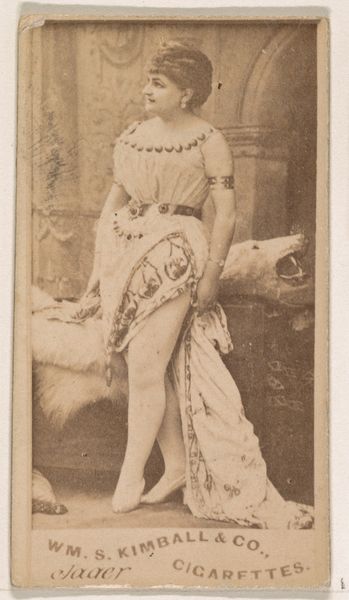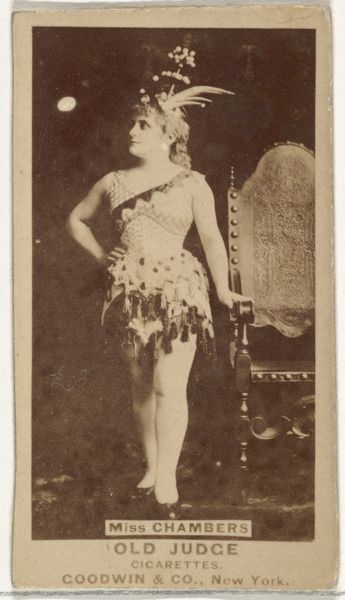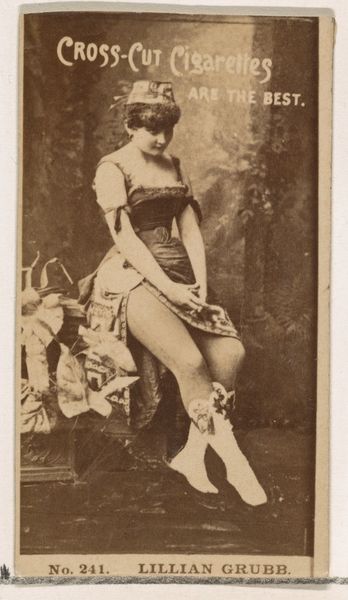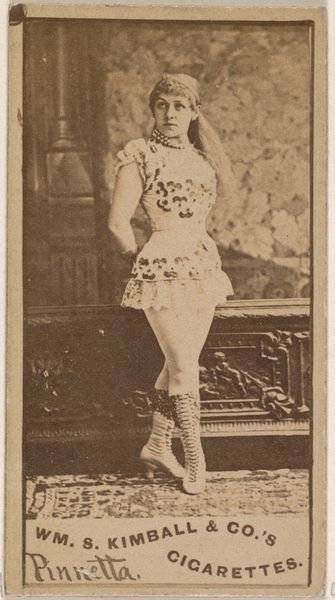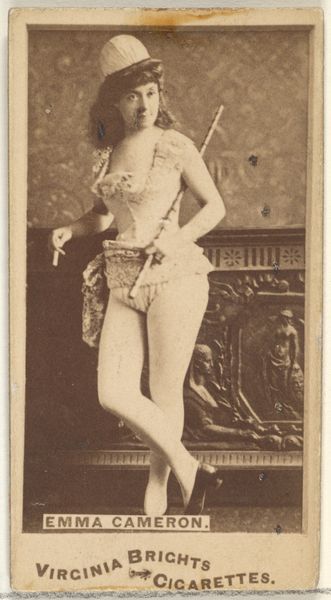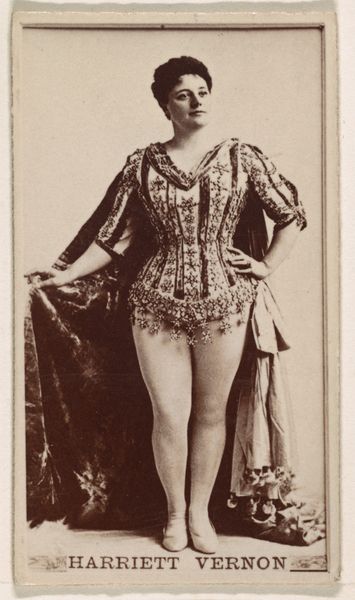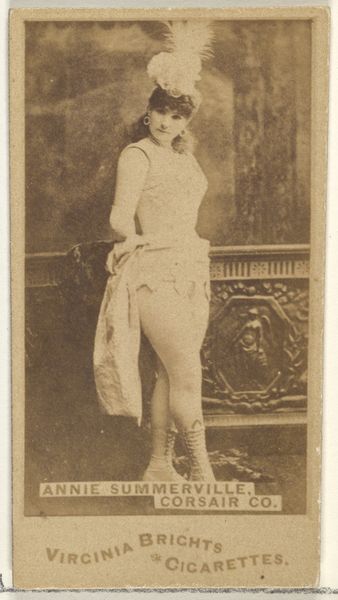
Miss Reins, from the Actresses series (N245) issued by Kinney Brothers to promote Sweet Caporal Cigarettes 1890
0:00
0:00
kinneybrotherstobaccocompany
Metropolitan Museum of Art, New York, NY
drawing, print, photography
#
portrait
#
drawing
#
pictorialism
# print
#
impressionism
#
photography
#
historical photography
#
19th century
Dimensions: Sheet: 2 1/2 × 1 7/16 in. (6.4 × 3.7 cm)
Copyright: Public Domain
Editor: So, here we have "Miss Reins" from the Actresses series, created around 1890 by Kinney Brothers. It's a photograph, part of a series used to promote Sweet Caporal Cigarettes. It’s intriguing how something so… ephemeral as a cigarette card has survived. What’s your take on this, focusing on the materials and production? Curator: It's fascinating how these everyday objects reveal the mechanics of image production and commodity culture. Kinney Brothers weren’t just selling tobacco; they were selling an image of glamour, attaching it to their product through mass-produced photographic prints. The availability and cost of photographic materials were key to this. Editor: Right, and the image itself. It’s a very staged portrait. It looks so formal, yet... advertising cigarettes? It is quite incongruous. Curator: Precisely. Look at the mise-en-scène. How does the materiality of the backdrop, the chair, even the actress’s costume, contribute to this constructed image? The quality of fabric, the elaborate chair—all of this creates a desirable association. Consumption isn't merely about utility; it is about projecting certain ideals and meanings through objects and, more broadly, images like these. Editor: It's like they're turning the actress herself into a commodity. And the card, its size and function… It was designed to be disposable, yet here we are, analyzing it. Curator: Exactly! Think about the labor involved – from the photographer to the factory workers churning out these cards. This “disposable” item embodies so much labor. Consider how photographic technology democratized portraiture, yet it was quickly co-opted by industry. Editor: I guess I never really considered how the materials themselves – the paper, the photographic emulsion –played such a central role in shaping not just the artwork, but its cultural impact too. It really highlights how art and commerce were already deeply intertwined. Curator: Precisely, we need to appreciate what that card really meant in the context of both artistic production and the promotion of consumerism.
Comments
No comments
Be the first to comment and join the conversation on the ultimate creative platform.
